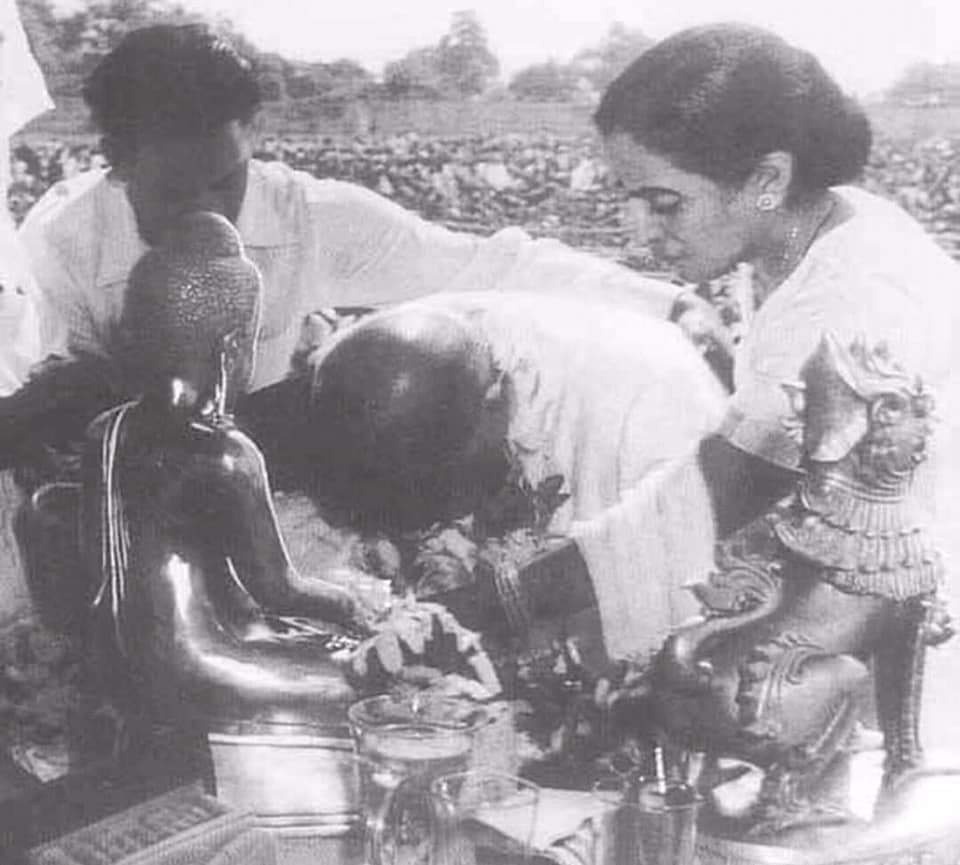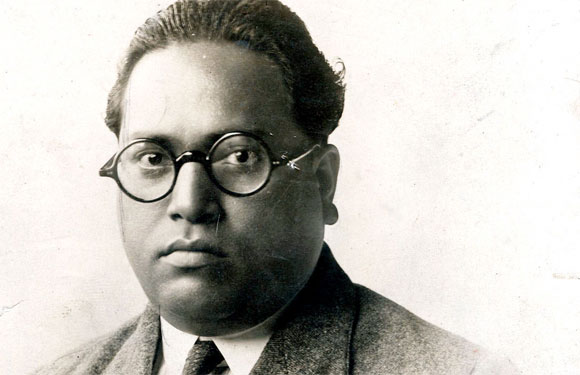Dr. B.R. Ambedkar’s conversion to Buddhism on October 14, 1956, was a transformative moment in the fight against caste discrimination in India. As a leading social reformer and the architect of the Indian Constitution, Dr.Ambedkar dedicated his life to championing the rights of marginalized communities, particularly the Dalits, who faced systemic oppression within the Hindu caste system.
Dr. Ambedkar’s disenchantment with Hinduism stemmed from its entrenched caste hierarchies, which he viewed as barriers to social equality and justice. Throughout his life, he experienced the injustices and discrimination faced by Untucheble, leading him to critically assess the principles of Hindu ideology. He believed that the religious framework of Hinduism perpetuated inequality, preventing true social progress.

Seeking an alternative path, Dr. Ambedkar found solace in Buddhism, which emphasizes values of equality, compassion, and rationality. The teachings of Buddhism resonated with his vision for a more just society, offering a spiritual foundation that rejected caste-based discrimination. By converting to Buddhism, Dr. Ambedkar aimed to inspire others to liberate themselves from the oppressive structures of society.
The public conversion ceremony in Nagpur, where Dr. Ambedkar and thousands of followers embraced Buddhism, was a landmark event. This conversion not only represented a personal transformation but also served as a powerful political statement against caste oppression. It encouraged Dalits and other marginalized groups to seek empowerment through Buddhism, promoting social reform and challenging the status quo.
Dr. B.R. Ambedkar’s acceptance of Buddhism was crucial in his lifelong struggle for social equality and justice. His conversion remains a significant milestone in the ongoing fight against caste discrimination in India, inspiring generations to pursue a path of enlightenment and human dignity. This movement highlights the enduring impact of Dr. Ambedkar’s legacy in promoting social change and equality through Buddhism.
Buddhism offers timeless practices and principles that can enrich modern life, bringing peace, awareness, and compassion in today’s fast-paced world. Here are some practical ways to apply Buddhism in everyday life:
- Mindfulness Practice
Daily mindfulness: Practicing mindfulness can help reduce stress, improve focus, and increase a sense of fulfillment in daily life. Simply paying attention to each action—whether working, eating, or walking—without judgment can cultivate inner peace.
Meditation: Regular meditation, even for a few minutes, can enhance emotional stability, clarity, and self-compassion. Apps and resources make it easy to integrate meditation into a busy schedule.
- Compassion and Kindness (Metta)
Loving-kindness meditation (Metta Bhavana): Practicing loving-kindness can help improve relationships, boost empathy, and foster a compassionate mindset. This is the practice of sending well-wishes to oneself and others, promoting an attitude of universal friendliness.
Acts of kindness: Practicing small, intentional acts of kindness towards others, even strangers, helps develop empathy and connection, valuable in both personal and professional life. - Letting Go of Attachment
Simplifying possessions: The Buddhist concept of non-attachment can help create a minimalist approach, focusing on experiences and meaningful relationships over material goods.
Non-attachment to outcomes: Letting go of rigid expectations, especially at work or in relationships, fosters a more resilient and flexible mindset that can adapt to change. - Ethical Living and Right Speech
Living with integrity: Practicing the ethical teachings of Buddhism—non-harming, truthfulness, and generosity—encourages ethical decision-making, which can improve personal satisfaction and social harmony.
Mindful communication: Practicing the right speech, or speaking with kindness and honesty, promotes constructive interactions and helps resolve conflicts. - Acceptance and Impermanence
Embracing change: Buddhism teaches that everything is impermanent, so embracing change can lead to inner peace. Accepting that challenges, emotions, and situations are temporary allows for a more balanced response.
Self-acceptance: Recognizing our imperfections without harsh judgment can increase self-compassion and reduce stress.
By incorporating even a few of these Buddhist principles, people can cultivate a life of deeper meaning, resilience, and peace within the complexities of modern life.
Dr. B.R. Ambedkar’s conversion to Buddhism in 1956 was a significant event, and numerous historical records and news articles document it. On October 14, 1956, Dr. Ambedkar formally converted to Buddhism along with lakhs of his followers in a ceremony in Nagpur, Maharashtra. This conversion was monumental in India’s history, symbolizing Dr. Ambedkar’s rejection of the caste discrimination he faced within Hindu society.
Explore newspapers from that period, such as ‘The Times of India, The Hindu, or The Indian Express, as they would have covered this event, and also some prominent Marathi newspapers from that time covered Dr. Ambedkar’s conversion to Buddhism. Key Marathi newspapers like Kesari, Sakal, Navakal, and Loksatta were in circulation and likely reported on this historic event in 1956.
-Pramod Jadhav –www.ambedkaree.com


